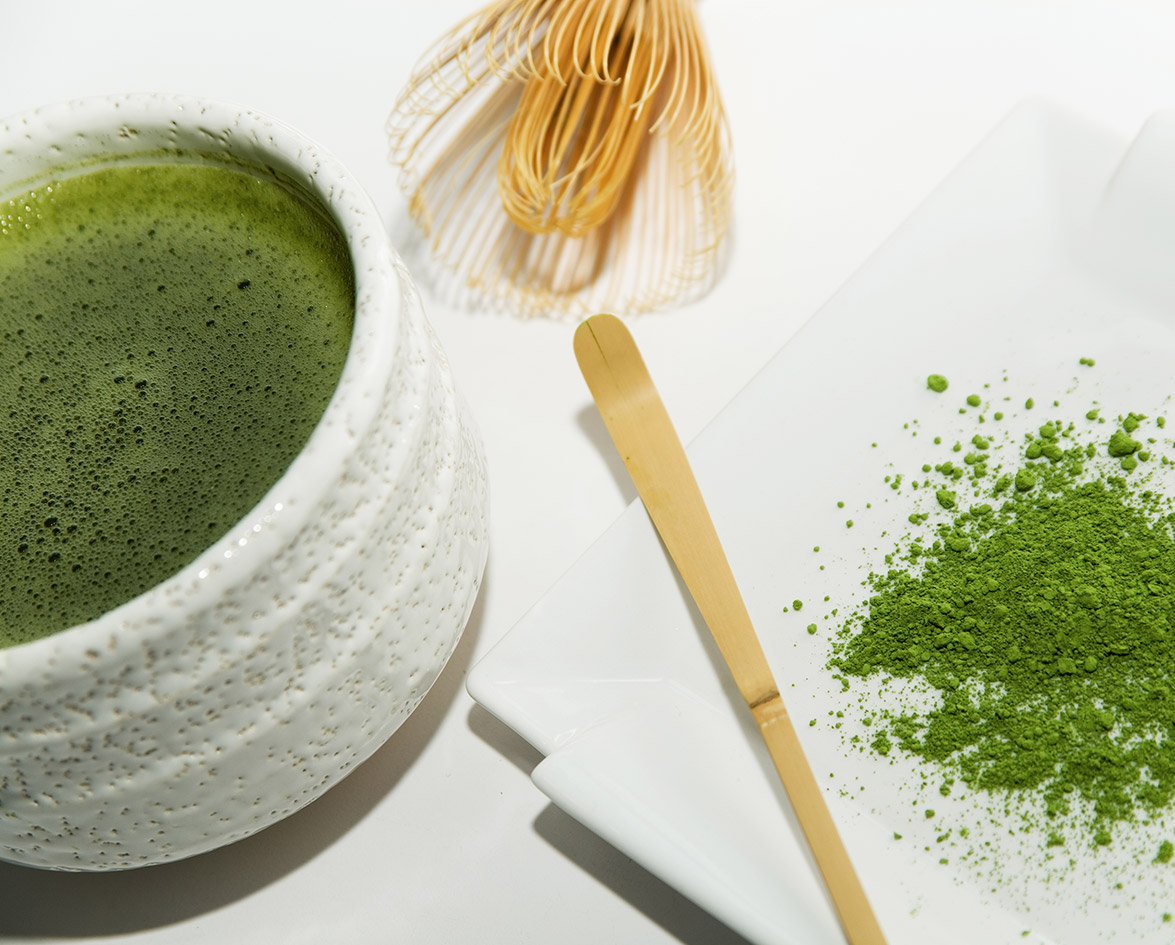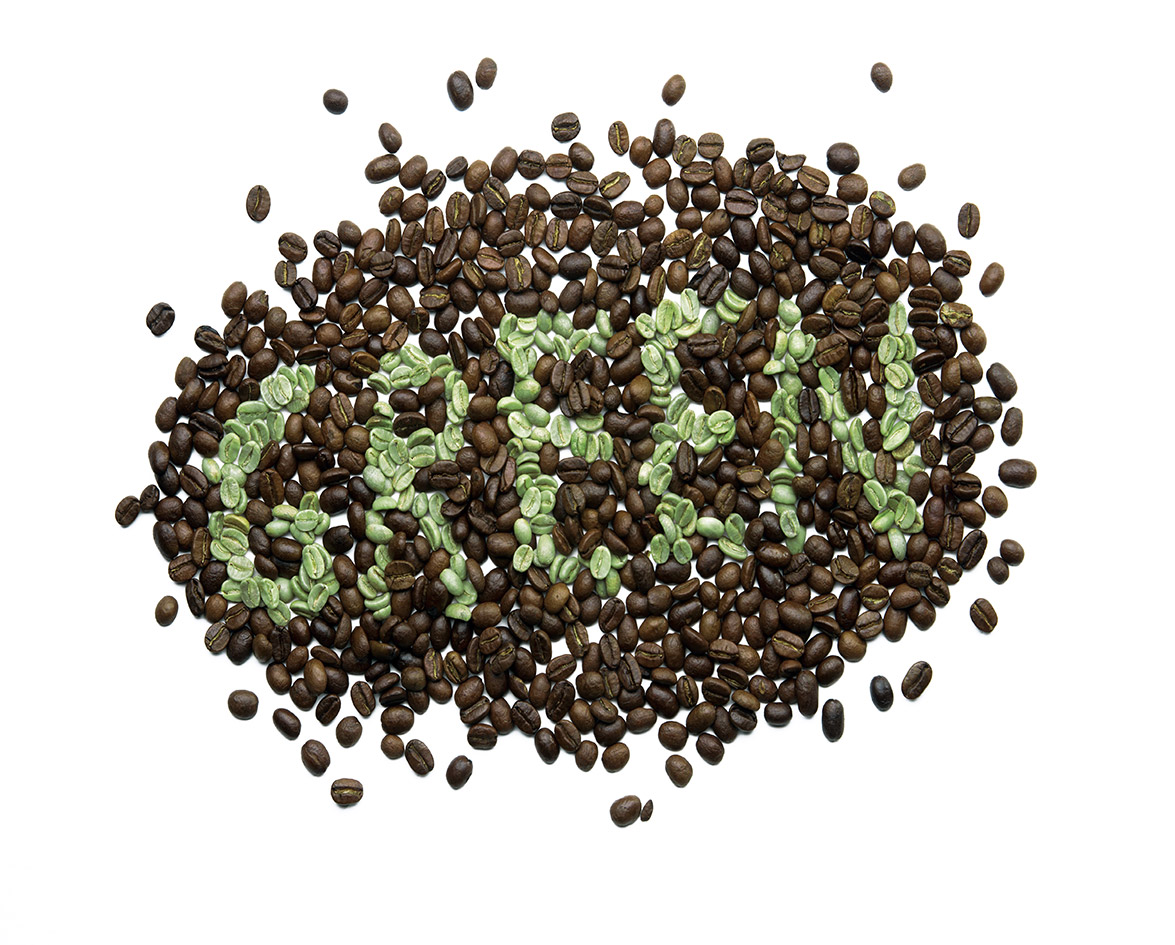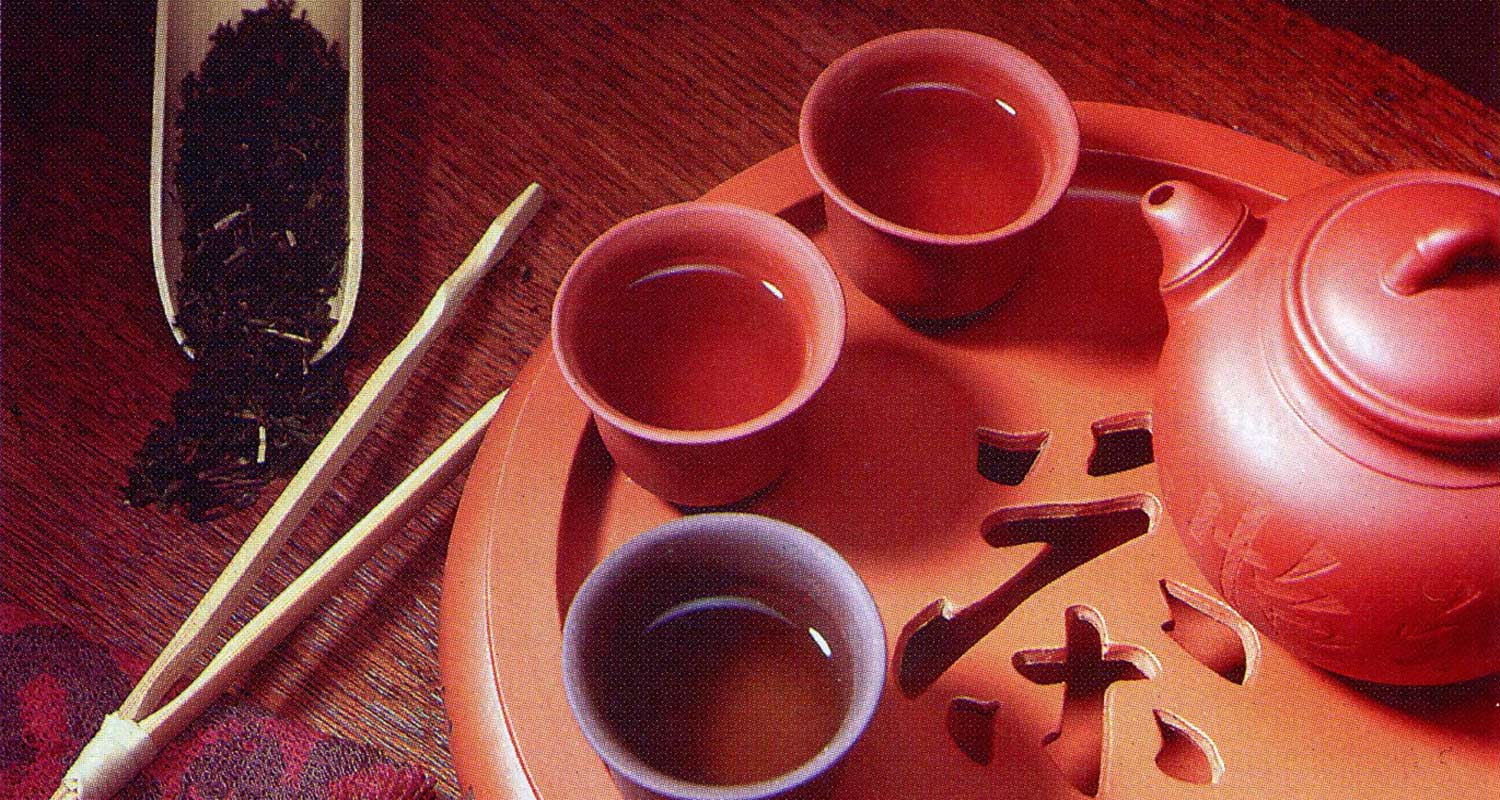Once served to Japanese royalty and known as the “Emperor’s Tea,” the ultra-healthy matcha green tea is becoming popular across the West Coast. From purists to fashionistas, North Americans are ditching their daily cup of joe for a cup of matcha tea. This fine, powdered tea has been around for centuries and with its undeniable health benefits—it has ten times the nutrients of regular green tea—matcha is considered today’s golden superfood.
Shade-grown in Japan, young matcha leaves are harvested only once a year in early spring. The leaves are carefully handpicked, steamed, dried and separated. The stems and veins are removed, leaving only the fleshy, nutrient-rich part of the leaves, and are then slowly stone-ground into a fine powder to ensure that the natural chlorophyll, amino acids and vitamins of the leaves are protected. Using a bamboo whisk, the powder is stirred into the water rather than being steeped. By consuming the entire leaf, the body is able to absorb 100% of the nutrients. A cup of steeped tea, by comparison, only contains five to ten per cent of the natural nutrients—most of which aren’t water-soluble and end up in the trash with the tea bag and tea leaves.
Matcha tea was introduced over 800 years ago in the Song Dynasty in Southern China when a Zen Buddhist monk brought the tea from China to Japan. In the tradition of Zen, the drinking of tea became a ceremony based on the four rituals of harmony, purity, tranquility and respect. With a new philosophy for tea, the Japanese tea ceremony was born. Through the teachings of the tea masters, the spirit of the tea ceremony entered into Japanese life and culture. Keeping with tradition, matcha tea has changed little since its origin and is successfully becoming a standout among other alternatives.
Matcha Tea vs. Green Tea
Compared to other green teas on the market, matcha contains approximately ten to 15 times the antioxidants per serving. Regular matcha drinkers enjoy a metabolic rate increase of 30–40 per cent, which could aid with weight loss. Most medical journals that tout green tea’s ability to impact disease assume a consumption amount of five to ten cups of fresh green tea per day, which is impossible for most North Americans to achieve. However, with one cup of matcha, which is equivalent to ten to 15 cups of regular green tea, the quota is met in one warm slurp.
For centuries Zen Buddhist monks have been drinking the powdered tea to stay awake and relaxed during hours of meditation. Unlike tea’s close cousin, coffee, matcha is full of nutrients. When consumed, the caffeine in coffee immediately enters the bloodstream and the effect peaks after 30–45 minutes, followed by a caffeine crash. The combination of nutrients found in matcha causes the caffeine in the tea to react much differently: the caffeine is slowly released into the bloodstream resulting in ‘time-released’ dosages over six to eight hours. The slow release of caffeine prevents insulin and adrenal spikes and blood sugar levels are maintained.
North Americans are finally catching on to what Zen monks and tea masters have known about for hundreds of years. Matcha is becoming a household term and can be found in everything from lattes and desserts to skincare products. For those who haven’t acquainted their palette to the described wheat-grassy taste of matcha, Vancouver-based Domo offers a sweet alternative: matcha infused with cane sugar and flavoured with chocolate, vanilla or ginger.
No matter what your preference is, the matcha trend is likely to stay. It may just be the best natural beverage you can drink, eat, or bathe in.











